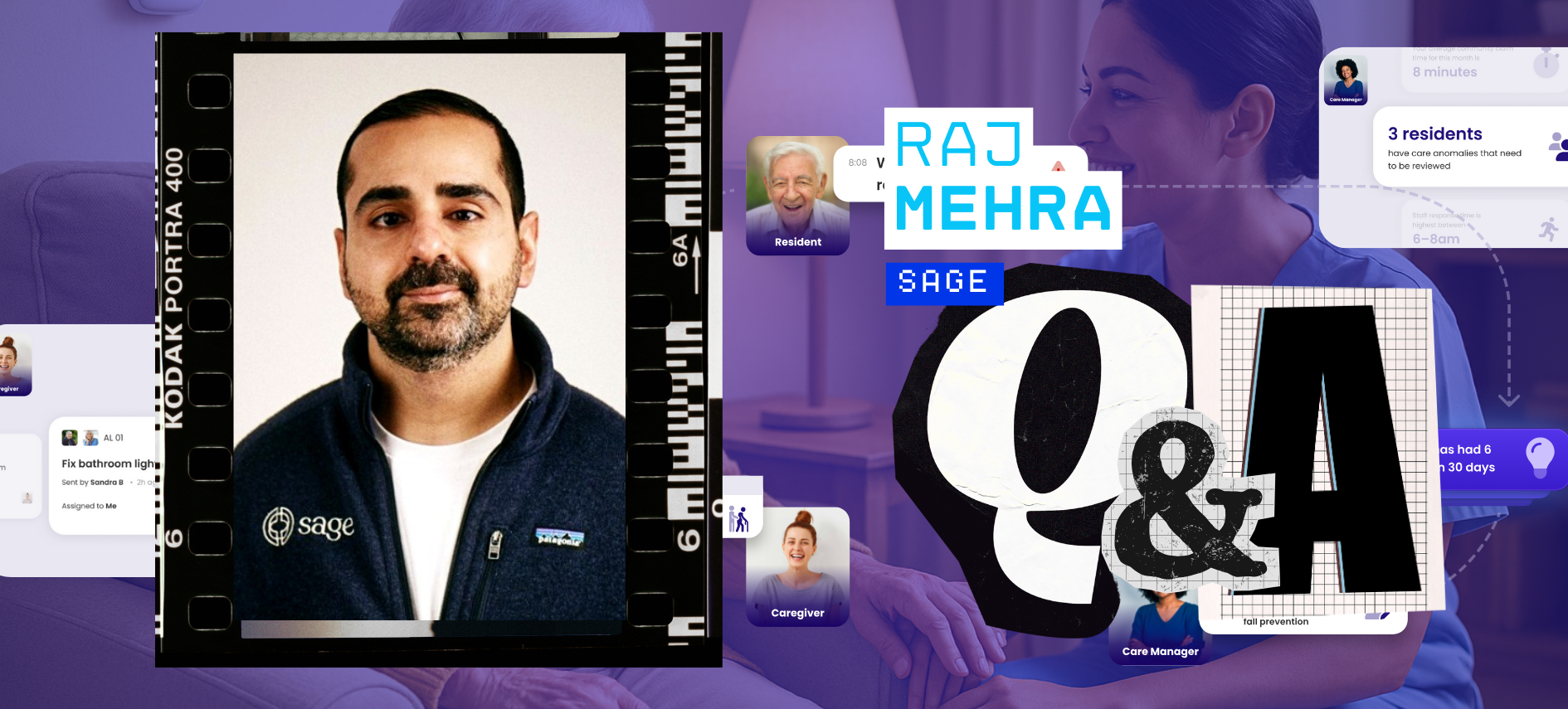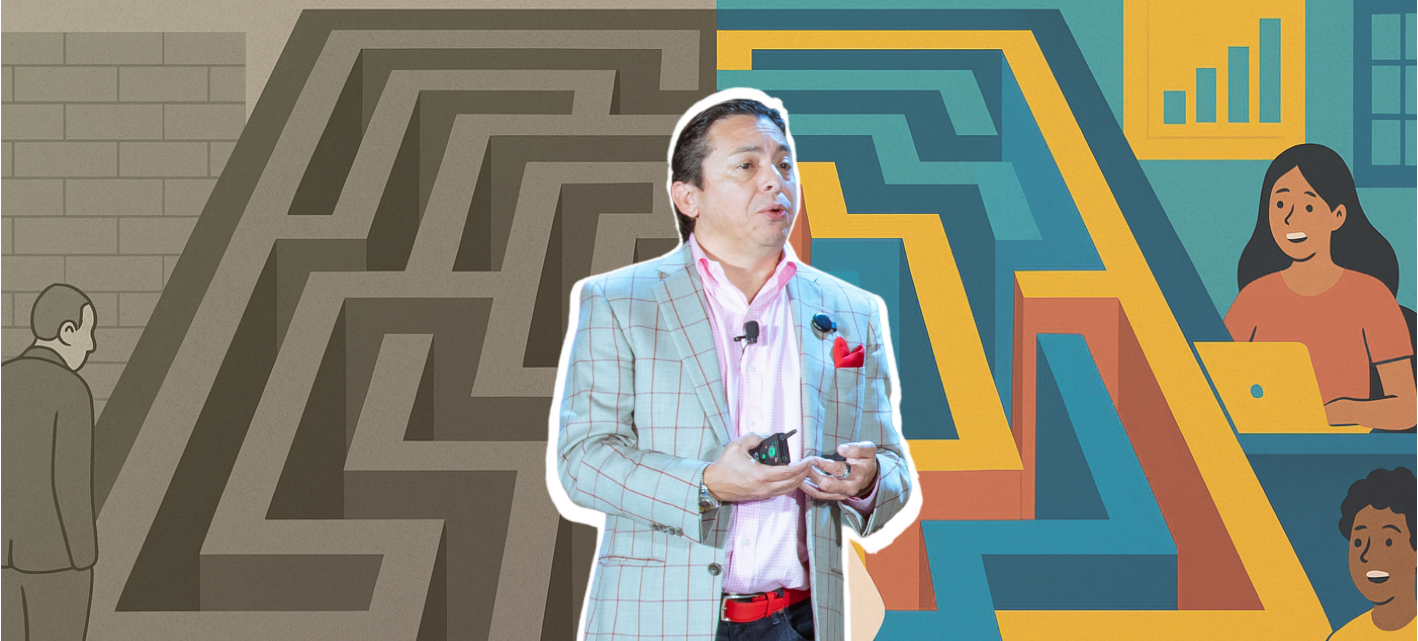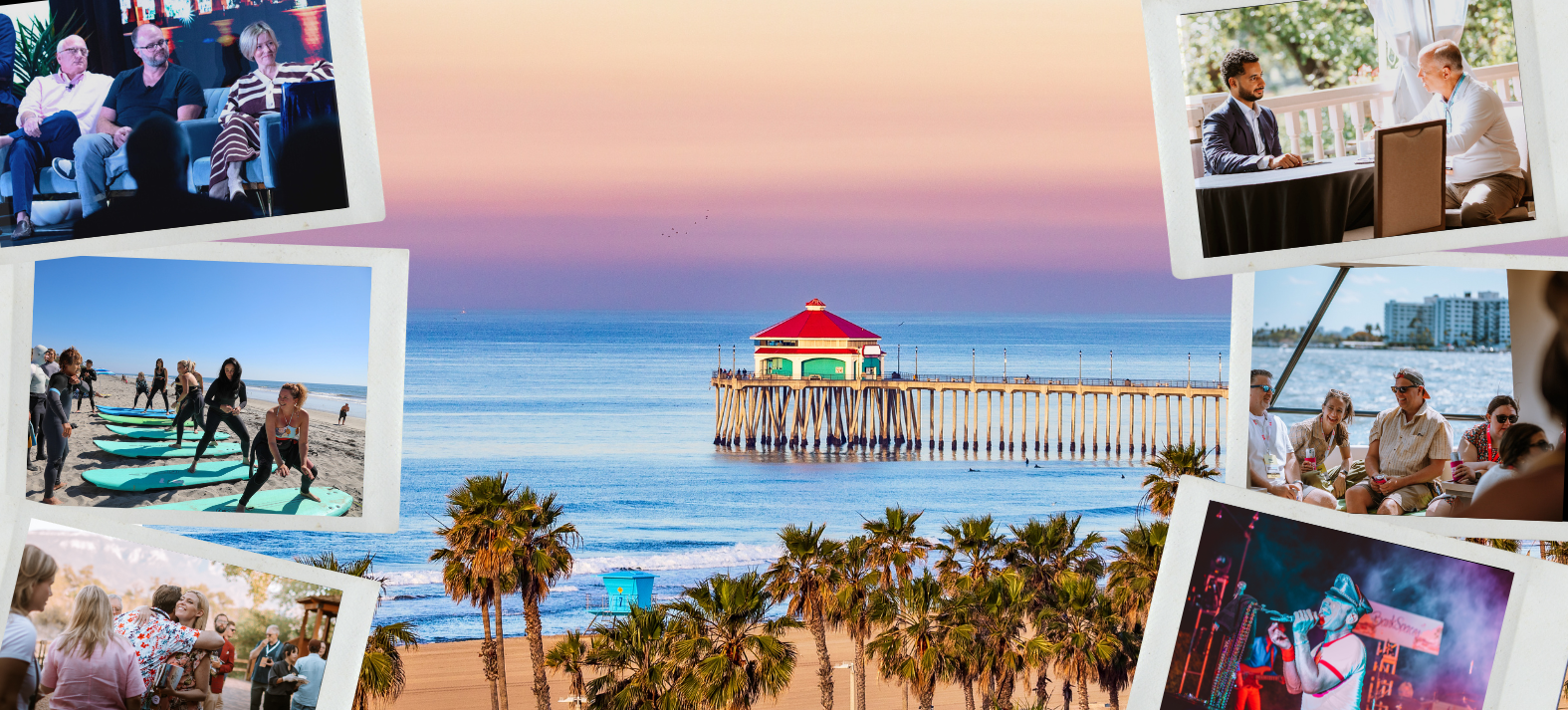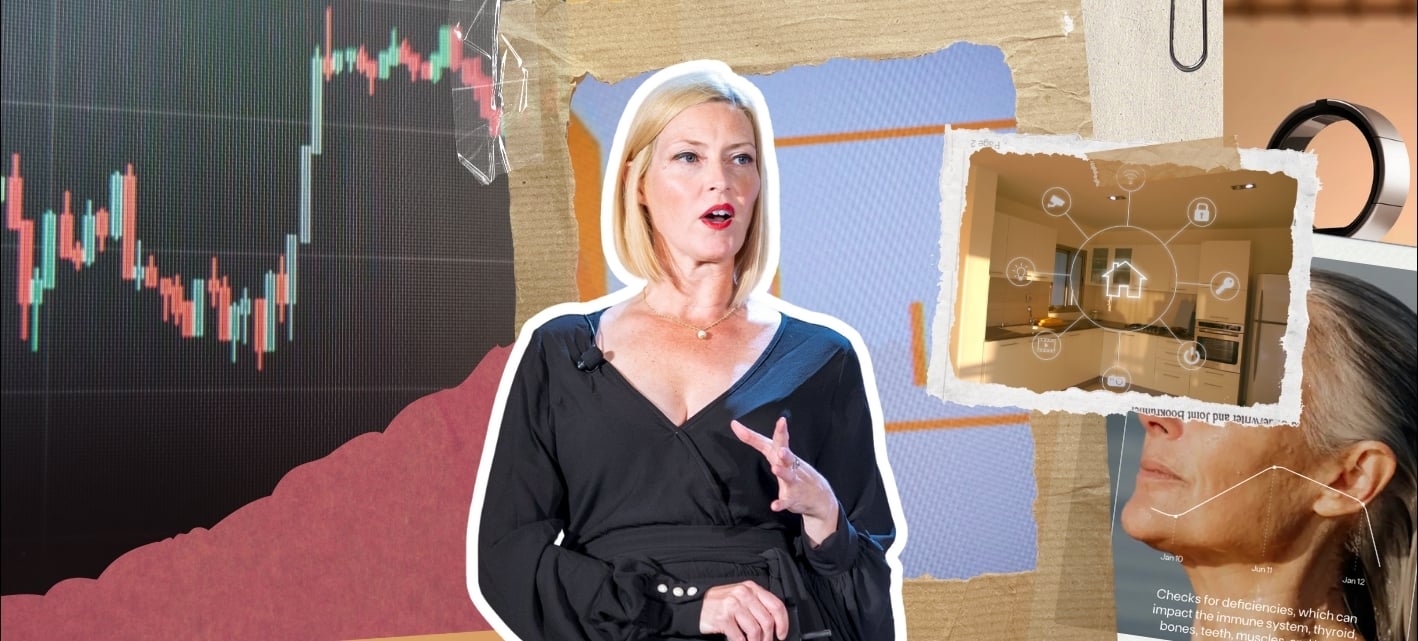At our recent Senior Living Innovation Forum, we tried something different. Instead of another panel on artificial intelligence, we created a talk show called "Talk Nerdy to Me"—complete with a couch, AI-generated images of our guests, and rapid-fire predictions about the future. The format brought an entertaining style to a topic that's moving very fast, and created space for candid insights from three seasoned operators.
The stage was set like a late-night talk show, and the energy was engaged and curious. George Netscher, CEO of SafelyYou, opened with a simple question to the audience: "If you can't keep up and you don't know how to start, shout “Help”." A few voices echoed back. "If you're eager to dive in but worry about leaving your team behind, shout “Me”." More voices joined in. "If you're the expert and could be up here yourself, shout “Nerds”." Only one or two brave souls responded.
It was the perfect metaphor for where the industry finds itself—caught between the fear of falling behind and the equally daunting prospect of rushing ahead into unknown territory.
The Problem with AI Fairy Dust
Joel Rosenberg, who leads data analytics at LCS, has seen enough vendor pitches to spot what he calls "AI fairy dust" from a mile away. "I really struggle with this idea that if I just bolt on AI to my existing product, it's gonna solve your needs," he said.
Rosenberg didn't arrive at senior living through the traditional path. He came from insurance, where his team built models to detect dental fraud and automate underwriting—problems with clear metrics and defined outcomes. When he joined LCS three years ago, he brought a crucial philosophy: start with the problem, not the solution.
"What's the one to two questions that you're trying to solve?" he asked. For LCS, it was sales data scattered across systems with no standardized reporting. So he built a dashboard. Then came lead scoring models that helped busy sales teams know where to focus their time. The result? A 2% increase in conversion rates from inquiry to tour, and from tour to move-in.
It sounds modest until you multiply it across thousands of prospects. "That's additional move-ins and tours," Rosenberg noted with the satisfaction of someone who can prove his worth in numbers that matter to the business.
The Jake Effect
Laura Willingham, COO of Milestone Retirement Communities, has her own way of cutting through vendor hype. She calls it "the Jake Effect," named after the dreamy character from Sixteen Candles—the one with the perfect hair, the cool car, and the party house.
"When we encounter a new potential partner, we have that same draw," Willingham explained. "They have the dashboard. They have all the things. And sometimes that can overtake that critical analysis of the why."
The problem with falling for Jake, she continued, warming to the metaphor, is that you might find yourself "in an apartment with Jake a year later and he doesn't like dogs. You like dogs. He bites his nails." The audience laughed, but the pain was real—expensive pilots that don't deliver, awkward conversations at conferences with vendors you're trying to avoid, relationships that looked perfect in the demo but fell apart in practice.
Her advice? Sometimes the geek might be the right choice. "He might have the better things. He might be the a la carte guy that can offer more for you at the stage that you're at as an organization."
Making Space for Innovation
Meghna Davidson, COO of Leisure Care, has found a different approach to managing the overwhelming pace of AI development. Coming up through the ranks as a physical therapist, she learned early that it all starts with employees. "If I serve my teams, they will serve the residents," she said.
A couple of years ago, Leisure Care created a VP of Innovation position—not someone to chase every shiny new object, but someone to walk alongside operations and understand real business needs. Crucially, this person attends conferences outside senior living. "I don't think innovation lives in a silo," Davidson explained. "Who better to look at than the hospitality industry for personalized experiences?"
Her innovation team explores ideas from conferences outside senior living—everything from hospitality to general tech conferences. Among the ideas they've considered are smart toilets, which Davidson described as "entertaining." But the real innovation might be in how they roll out AI tools like Microsoft Copilot—starting with executives, then department heads, then community leaders, with monthly training sessions that share small, practical wins.
One of Davidson's favorites? Using Copilot for performance evaluations. "It's one of the things that, as people get busy in the communities, they put off and they put off," she said. "If Copilot can help you be timely in giving your staff that feedback, then you can spend that time coaching."
The Human-AI Partnership
Perhaps the most revealing moment came during rapid-fire predictions about the next five years. Would robots replace caregivers? All three guests answered with an emphatic no. Would we see more human connection at communities or less? More, they all agreed, if AI is implemented thoughtfully.
The logic is compelling: if AI can handle performance reviews, summarize care notes, and identify which residents need extra attention, caregivers can spend more time doing what only humans can do—providing comfort, building relationships, offering the kind of presence that no algorithm can replicate.
Rosenberg put it simply: "Our future employees are gonna want these tools." The question isn't whether to adopt AI, but how to do it in a way that enhances rather than replaces human connection.
Beyond the Hype
As the session wound down, the three leaders shared where they'd invest $10 million in AI for senior living. Davidson chose caregiver burnout. Willingham split her budget between resident engagement and staff engagement. Rosenberg focused on resident engagement and the recruiting challenge.
What stood out wasn't just their choices, but their confidence. These weren't leaders paralyzed by the pace of change or seduced by vendor promises. They were operators who had learned to ask hard questions, start small, and always keep the human element at the center.
The talk show format worked because it captured something panels often miss—the real conversations leaders have when the presentations are over and the vendors have gone home. In those moments, between the laughter and the honest admissions of past mistakes, you could hear the sound of an industry finding its footing.
The AI revolution in senior living isn't being led by technologists or venture capitalists. It's being shaped by operators like Rosenberg, Willingham, and Davidson—people who understand that the most sophisticated algorithm is worthless if it doesn't help a caregiver provide better care or make a resident feel more at home.
As Netscher noted in closing, the real magic happens when technology makes caregivers' lives easier so they can focus on what they do best: serving the most vulnerable among us with compassion, dignity, and skill that no machine can match.
The nerds, it turns out, are the ones asking the most human questions of all.
------------------
Watch the full episode below…

Posted by
SLIF heads to Carlsbad!
The One of a Kind Retreat for Senior Housing Leaders.
May 31 - June 2, 2026 | Carlsbad, CA
Learn More

-2.png)







Comments